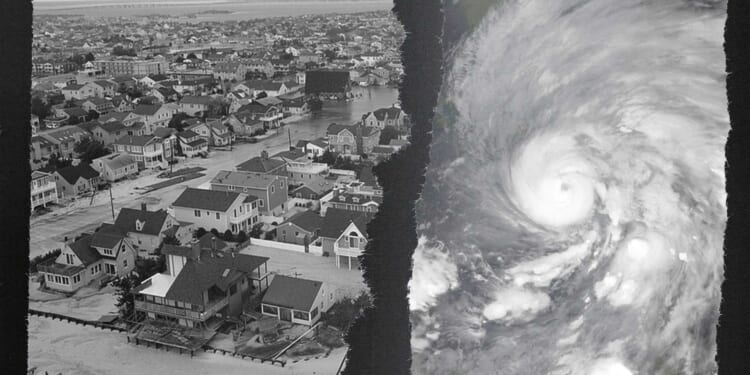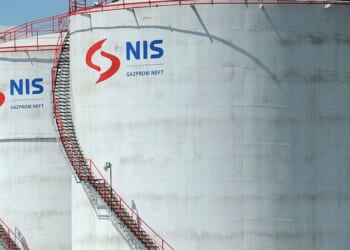In October 2012, Hurricane Sandy made landfall near Atlantic City, New Jersey. The storm would bring severe flooding to the East Coast—particularly New Jersey and New York City—and go down as the fifth-most-expensive tropical cyclone in U.S. history ($88.5 billion in damages), per a 2024 estimate by the National Oceanic and Atmospheric Administration. But the costs of the storm are still being realized, and more than 13 years later, taxpayers are still footing the bill for the federal government’s mismanagement, according to a recent report from the Transportation Department’s Office of Inspector General (OIG).
In January 2013, Congress approved over $50 billion in aid for Sandy relief. The bill, which included bailouts for wealthy Connecticut residents, appropriated $10.9 billion to the Federal Transit Administration’s (FTA) Public Transportation Emergency Relief Program, $10 billion of which the FTA gave to states for hurricane recovery and resilience projects.
Portions of this money have, unsurprisingly, been spent wastefully, and the OIG report identifies more than $95 million in questionable costs. One example of wasteful spending comes from an awardee that, in June 2017, was given an $88.9 million grant for “design and construction for replacing commuter and light rail signal, power, and communication systems.” The project was originally supposed to end in May 2018, but was granted an extension to operate through December 2021. Even with this extension, the project was not finished when the OIG conducted its audit. As a result, the recipient had incurred “approximately $52.5 million in project activity costs” since its 2021 deadline. And because the project never received an extension from the FTA, these expenditures are “ineligible.” However, the recipient is working to extend its grant period with the agency, which would allow the contractor to be reimbursed for these cost overruns.
The OIG includes other examples of costs that were incurred after a project’s period of performance had ended. In many cases, the FTA’s lack of oversight allowed grantees to extend project milestones well beyond their original scope. Other recipients were told to prioritize disbursing Sandy funding quickly, but as the OIG points out, “FTA’s oversight was not sufficient to encourage expedited spending of Hurricane Sandy funds or to reduce the risks of ineligible costs.”
But unauthorized costs are only one way that taxpayers are still footing the bill for Hurricane Sandy recovery; the OIG also identified $2.9 billion in unspent funds across 28 active projects. These grant recipients “gave several reasons for the prolonged project activity,” according to the OIG, including COVID-related supply chain disruptions, staffing shortages, and extensive environmental or historic preservation reviews.
One recipient, which was given $773.1 million in 2017 for “the replacement of a new passenger and freight rail service bridge,” was initially expected to finish in December 2024. But because of contract rebidding and environmental reviews—the developer says the latter delayed the project by three years—the project’s deadline has been extended to July 2030. And because this funding has no expiration date, the deadline could be extended yet again, which could push the project’s cost up.
Meanwhile, six FTA grantees were able to do the impossible and complete their projects on time and under budget, but bureaucracy and unclear direction from the FTA have left these projects “open” and their funds—totaling more than $96 million—unspent.
One recipient that completed its project in June 2017 has still not formally closed the grant because “it is waiting on direction from FTA on how to manage and potentially reprogram the unexpended funds,” according to the OIG. Another recipient, which still has $12.8 million in its account, has not closed its grant in part because it is settling outstanding insurance payments. This grantee told the OIG that it plans to extend its timeline through December to complete remaining administrative activities before it closes the grant for good.
In light of its audit, the OIG recommends that the FTA improve oversight of Sandy spending, “review and take corrective action to address the approximately $95.4 million in questioned costs,” standardize the process to extend project timelines when needed, and update its guidance on closing out grants. Conducting more timely and effective grant closeouts could put up to $117 million in federal funds to better use.
As for what to do with the unspent $96 million, the FTA is not allowed to send it back to the Treasury. As the OIG points out, the $10.9 billion Congress gave to the FTA in 2013 “remains available for obligation until expended, otherwise known as no-year authority.” This means that all funding must be spent on Sandy-related projects, and unspent money can’t be returned.
The immediate damage caused by Hurricane Sandy was substantial. So are the lingering ramifications for taxpayers.

















